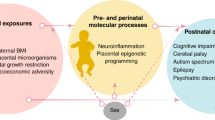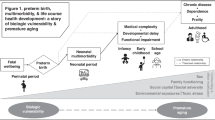Abstract
Introduction:
Although important new strategies have improved outcomes for very preterm infants, males have greater mortality/morbidity than females. We investigated whether the excess of adverse later effects in males operated through poorer neonatal profile or if there was an intrinsic male effect.
Results:
Male sex was significantly associated with higher birth weight, death or oxygen dependency (72% vs. 61%, boys vs. girls), hospital stay (97 vs. 86 days), pulmonary hemorrhage (15% vs. 10%), postnatal steroids (37% vs. 21%), and major cranial ultrasound abnormality (20% vs. 12%). Differences remained significant after adjusting for birth weight and gestation. At follow-up, disability, cognitive delay, and use of inhalers remained significant after further adjustment.
Discussion:
We conclude that in very preterm infants, male sex is an important risk factor for poor neonatal outcome and poor neurological and respiratory outcome at follow-up. The increased risks at follow-up are not explained by neonatal factors and lend support to the concept of male vulnerability following preterm birth.
Methods:
Data came from the United Kingdom Oscillation Study, with 797 infants (428 boys) born at 23–28 wk gestational age. Thirteen maternal factors, 8 infant factors, 11 acute outcomes, and neurological and respiratory outcomes at follow-up were analyzed. Follow-up outcomes were adjusted for birth and neonatal factors sequentially to explore mechanisms for differences by sex.
Similar content being viewed by others
Log in or create a free account to read this content
Gain free access to this article, as well as selected content from this journal and more on nature.com
or
References
Office for National Statistics 2006 Focus on Gender. Available at: http://www.ons.gov.uk/ons/publications/re-reference-tables.html?edition=tcm%3A77-51142 (accessed September 25, 2011).
Office for National Statistics 2007 Birth statistics 2006 series FM1 No 35. Available at: http://www.ons.gov.uk/ons/rel/vsob1/birth-statistics--england-and-wales--series-fm1-/no--35--2006/index.html (accessed September 25, 2011).
Centre for Longitudinal Studies 2006 The Millenium Studies. Available at: http://www.cls.ioe.ac.uk/studies.asp?section=000100020001 (accessed September 25, 2011).
Zeitlin J, Saurel-Cubizolles MJ, De Mouzon J, et al. Fetal sex and preterm birth: are males at greater risk? Hum Reprod 2002;17:2762–8.
Brothwood M, Wolke D, Gamsu H, Benson J, Cooper D . Prognosis of the very low birthweight baby in relation to gender. Arch Dis Child 1986;61:559–64.
Stevenson DK, Verter J, Fanaroff AA, et al. Sex differences in outcomes of very low birthweight infants: the newborn male disadvantage. Arch Dis Child Fetal Neonatal Ed 2000;83:F182–5.
Costeloe K, Hennessy E, Gibson AT, Marlow N, Wilkinson AR . The EPICure study: outcomes to discharge from hospital for infants born at the threshold of viability. Pediatrics 2000;106:659–71.
Hack M, Fanaroff AA . Outcomes of children of extremely low birthweight and gestational age in the 1990’s. Early Hum Dev 1999;53:193–218.
Fleisher B, Kulovich MV, Hallman M, Gluck L . Lung profile: sex differences in normal pregnancy. Obstet Gynecol 1985;66:327–30.
Catlin EA, Powell SM, Manganaro TF, et al. Sex-specific fetal lung development and müllerian inhibiting substance. Am Rev Respir Dis 1990;141:466–70.
McMillan EM, King GM, Adamson IY . Sex hormones influence growth and surfactant production in fetal lung explants. Exp Lung Res 1989;15:167–79.
Jobe AH, Mitchell BR, Gunkel JH . Beneficial effects of the combined use of prenatal corticosteroids and postnatal surfactant on preterm infants. Am J Obstet Gynecol 1993;168:508–13.
Jones HP, Karuri S, Cronin CM, et al.; Canadian Neonatal Network. Actuarial survival of a large Canadian cohort of preterm infants. BMC Pediatr 2005;5:40.
Thomas MR, Marston L, Rafferty GF, et al. Respiratory function of very prematurely born infants at follow up: influence of sex. Arch Dis Child Fetal Neonatal Ed 2006;91:F197–201.
Greenough A, Limb E, Marston L, et al. Risk factors for respiratory morbidity in infancy after very premature birth. Arch Dis Child Fetal Neonatal Ed 2005;90:F320–3.
Marlow N, Greenough A, Peacock JL, et al. Randomised trial of high frequency oscillatory ventilation or conventional ventilation in babies of gestational age 28 weeks or less: respiratory and neurological outcomes at 2 years. Arch Dis Child Fetal Neonatal Ed 2006;91:F320–6.
Johnson AH, Peacock JL, Greenough A, et al.; United Kingdom Oscillation Study Group. High-frequency oscillatory ventilation for the prevention of chronic lung disease of prematurity. N Engl J Med 2002;347:633–42.
Johnson S, Marlow N, Wolke D, et al. Validation of a parent report measure of cognitive development in very preterm infants. Dev Med Child Neurol 2004;46:389–97.
Marston L, Peacock JL, Yu K, et al. Comparing methods of analysing datasets with small clusters: case studies using four paediatric datasets. Paediatr Perinat Epidemiol 2009;23:380–92.
Stata version 10.0 2008 Statacorp Texas USA.
Wood NS, Costeloe K, Gibson AT, et al.; EPICure Study Group. The EPICure study: associations and antecedents of neurological and developmental disability at 30 months of age following extremely preterm birth. Arch Dis Child Fetal Neonatal Ed 2005;90:F134–40.
Jones M, Castile R, Davis S, et al. Forced expiratory flows and volumes in infants. Normative data and lung growth. Am J Respir Crit Care Med 2000;161:353–9.
Hoo AF, Henschen M, Dezateux C, Costeloe K, Stocks J . Respiratory function among preterm infants whose mothers smoked during pregnancy. Am J Respir Crit Care Med 1998;158:700–5.
Hintz SR, Kendrick DE, Vohr BR, Kenneth Poole W, Higgins RD; Nichd Neonatal Research Network. Gender differences in neurodevelopmental outcomes among extremely preterm, extremely-low-birthweight infants. Acta Paediatr 2006;95:1239–48.
Author information
Authors and Affiliations
Corresponding author
Supplementary information
Supplementary Table S1.
(DOC 72 kb)
Rights and permissions
About this article
Cite this article
Peacock, J., Marston, L., Marlow, N. et al. Neonatal and infant outcome in boys and girls born very prematurely. Pediatr Res 71, 305–310 (2012). https://doi.org/10.1038/pr.2011.50
Received:
Accepted:
Published:
Issue date:
DOI: https://doi.org/10.1038/pr.2011.50
This article is cited by
-
TrkB-mediated sustained neuroprotection is sex-specific and \(\text{ER}\alpha\)-dependent in adult mice following neonatal hypoxia ischemia
Biology of Sex Differences (2024)
-
Economic development, female wages and missing female births in Spain, 1900–1930
Cliometrica (2024)
-
Factors associated with birth asphyxia among term singleton births at two referral hospitals in Northern Uganda: a cross sectional study
BMC Pregnancy and Childbirth (2022)
-
Effects of neurodevelopmental risk factors on brainstem maturation in premature infants
Pediatric Research (2022)
-
Sports participation and preterm birth: a nationwide birth cohort in Japan
Pediatric Research (2022)



